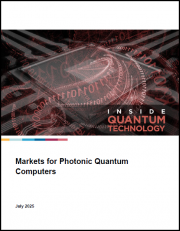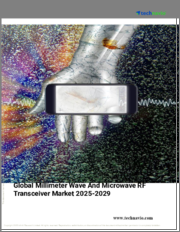
|
시장보고서
상품코드
1640722
AI 네이티브 RAN : 통신사업자 및 벤더를 위한 프레임워크The AI-native RAN: A Framework for Telecoms Operators and Vendors |
||||||
AI 네이티브 RAN은 모바일 네트워크의 경제성을 바꿀 수 있는 잠재력을 가지고 있지만, 지금 당장 어려운 결정을 내려야 합니다.
AI는 자동화 및 지능화를 위해 RAN에 도입되기 시작했으며, 업계는 AI를 모바일 네트워크의 모든 요소에 통합할 수 있는 AI 네이티브 RAN이라는 야심찬 비전을 제시했습니다. 이는 5G의 경제성을 변화시키고, 새로운 서비스를 가능하게 하며, 고객 경험을 향상시킬 수 있는 잠재력을 가지고 있습니다. 그러나 솔루션과 생태계는 아직 개발 단계에 있으며, 통신사업자들이 전략을 수립하는 데 있어 여전히 도전과제로 남아있습니다.
본 보고서는 새로운 통신사업자 조사를 바탕으로 AI 네이티브 플랫폼의 주요 촉진요인과 과제를 정리하고, AI 네이티브 RAN의 분류를 작성했습니다. 또한, AI 네이티브 RAN의 분류 체계를 만들고, 벤더와 통신사업자를 포함한 주요 활성 플레이어를 매핑했습니다. 이 프레임워크를 통해 이해관계자들은 신흥 시장에서 자신의 위치를 이해하고 제휴 관계를 파악할 수 있습니다.
목차
- AI 네이티브 RAN이란 무엇이며, 그 채택의 원동력은 무엇인가?
- AI 네이티브 RAN의 주요 요소
- 이들 요소의 개발을 주도하는 주체는 누구이며, 언제 실용화될 것인가?
- 어떤 벤더 및 기타 이해관계자들이 플랫폼과 생태계를 형성하고 있으며, 이들이 배포를 가속화하는 데 도움이 되는가?
- 임베디드 AI로 지원할 수 있거나 지원해야 하는 RAN 기능은 무엇인가?
- AI 처리 기능은 네트워크의 어디에 배치되며, 아키텍처의 주요 결정 사항은 무엇인가?
"The AI-native RAN could transform the economics of mobile networks but challenging decisions must be made now."
AI is beginning to be introduced to the RAN to increase automation and intelligence, but the industry has set out an ambitious vision of an AI-native RAN in which AI can be embedded into every element of the mobile network. This has the potential to transform the challenging economics of 5G, enable new services and improve customer experiences. However, the solutions and ecosystem are nascent, which makes it challenging for telecoms operators to plan their strategies.
This report sets out the main drivers and challenges in the AI-native platform, based on new operator surveys. It creates a taxonomy of the AI-native RAN and maps this against the main active players, including vendors and operators. The framework enables stakeholders to understand their place in the emerging market and identify alliances.
Questions answered:
- What is the AI-native RAN and what are the drivers for its adoption?
- What are the main elements of an AI-native RAN? Who is leading the development of these elements and when will they be commercially available?
- Which vendors and other stakeholders are forming platforms or ecosystems and will these help to accelerate deployability?
- Which RAN functions can or should be supported with embedded AI?
- Where would the AI processing capability be located in the network and what are the main architectural decisions?
Who should read this report:
- Heads of strategy and technology within vendor companies in the RAN equipment, RAN software, AI platforms, AI models and data, and semiconductors sectors.
- CTO office and heads of network or data strategy within operators, especially those that aim to establish a roadmap for RAN AI and for virtualised RAN within the next few years.
- CEOs and CTOs within start-up companies that are focused on RAN AI.
- Leaders of standards groups or industry alliances that are working on RAN AI.



















